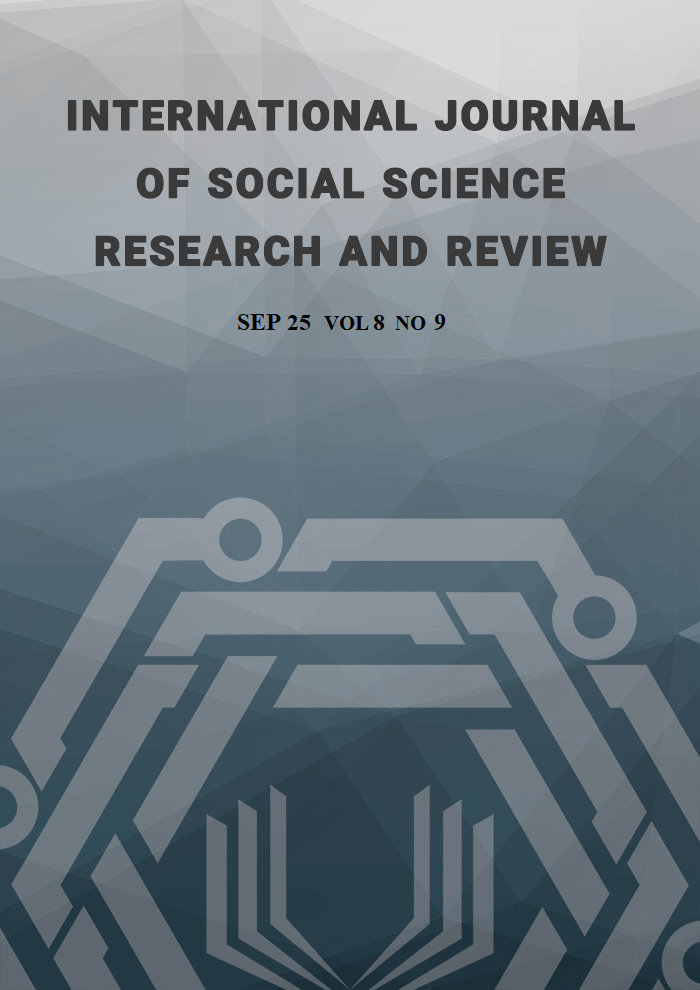Constructing the Tyrant: A Filmic Analysis of Idi Amin in the Film the Rise and Fall of Idi Amin
Abstract
This study examines the filmic portrayal of Idi Amin in the film The Rise and Fall of Idi Amin (1981) to understand how cinema constructs political autocracy and postcolonial African leadership. The justification for this inquiry lies in the critical need to explore how African leaders, particularly autocrats, are represented in film, an underexplored area in African cinema studies. This study was anchored in postcolonial theory. Furthermore, the study aimed to explore how the film navigates ideological tensions between historical authenticity and Western cinematic representations of African figures. The study employed a qualitative approach, utilizing close textual analysis of the film, supplemented by thematic analysis to identify recurrent motifs and representational patterns. The findings revealed that the film simultaneously reinforces and critiques dominant political myths surrounding postcolonial African states, using the figure of Amin as a symbolic site for contesting narratives of power, violence, and identity. This study contributes to scholarship in African film studies, political representation, and postcolonial critique, offering nuanced insights into the role of cinema as a cultural medium for shaping and contesting political memory.
References
Abudul, H. (2025). Ethnic politics and power consolidation in Idi Amin’s Uganda: The Nubi question re-examined. Kampala University Press.
Guthrie, J. (2012). Reel darkness: The myth of Africa in The Last King of Scotland. Journal of African Cinematic Studies, 5(1), 45–63.
Kembabazi, S. (2020). Morality and the state: Fashion, sexuality, and reproductive politics under Idi Amin. Journal of African Cultural Studies, 32(4), 489–505.
Kiyimba, A. (1998). The metaphorical afterlife of Idi Amin: Trauma and memory in Ugandan literature. Research in African Literatures, 29(3), 108–121.
Leopold, M. (2020). Idi Amin: The story of Africa’s most notorious dictator. Yale University Press.
Okero, B. A. S., Obara, G. N., & Kebaya, C. (2019). Representation of the Big Man typology in The Rise and Fall of Idi Amin.
Orlando, V. (2014). Recycled images: Africa in mainstream global cinema. Global Media Journal: African Edition, 6(1), 1–16.
Prince, D. (2024). The Schahriar Syndrome and the dictator’s mind: A psychodynamic psychobiography of Idi Amin. Journal of Psychohistory and Political Psychology, 19(1), 33–58.
Tayeebwa, W., Ntulume, M., & Mbaine Rasmussen, J. (2010). Uganda’s national cinema: Histories, themes, and identities. Eastern African Film Review, 4(2), 20–37.
, A. (2024). The racial framing of the 1972 Asian expulsion in Uganda’s postcolonial press. African Media Studies Journal, 12(1), 85–104.
Vokes, R. (2020). Amin’s archive: Photography, memory, and postcolonial identity. Visual Studies in Africa, 11(3), 214–232.
Bhagat, R. (1983). Amin: The Wild Beast of Uganda. Vikas Publishing House.
Kiyimba, A. (1998). The metaphorical afterlife of Idi Amin: Trauma and memory in Ugandan literature. Research in African Literatures, 29(3), 108–121.
Leopold, M. (2020). Idi Amin: The story of Africa’s most notorious dictator. Yale University Press.
Masquerade, Postcolonial Masculinity. (2015). Gender, violence and the body in African politics. Africa Masculinities Series. Zed Books.
Megah, P. N. (2016). Dictatorship and the politics of fear: Idi Amin’s rule in Uganda. Journal of African Governance and Development, 4(1), 22–39.
Okero, M., Obara, A., & Kebaya, C. (2019). The Big Man as political spectacle: Reading The Rise and Fall of Idi Amin. African Studies Review, 62(4), 89–106.
Prince, D. (2024). The Schahriar Syndrome and the dictator’s mind: A psychodynamic psychobiography of Idi Amin. Journal of Psychohistory and Political Psychology, 19(1), 33–58.
Copyright (c) 2025 Sospeter Okero Bichang'a

This work is licensed under a Creative Commons Attribution-NonCommercial-NoDerivatives 4.0 International License.
Copyright for this article is retained by the author(s), with first publication rights granted to the journal. This is an open-access article distributed under the terms and conditions of the Creative Commons Attribution license (https://creativecommons.org/licenses/by-nc-nd/4.0/).





